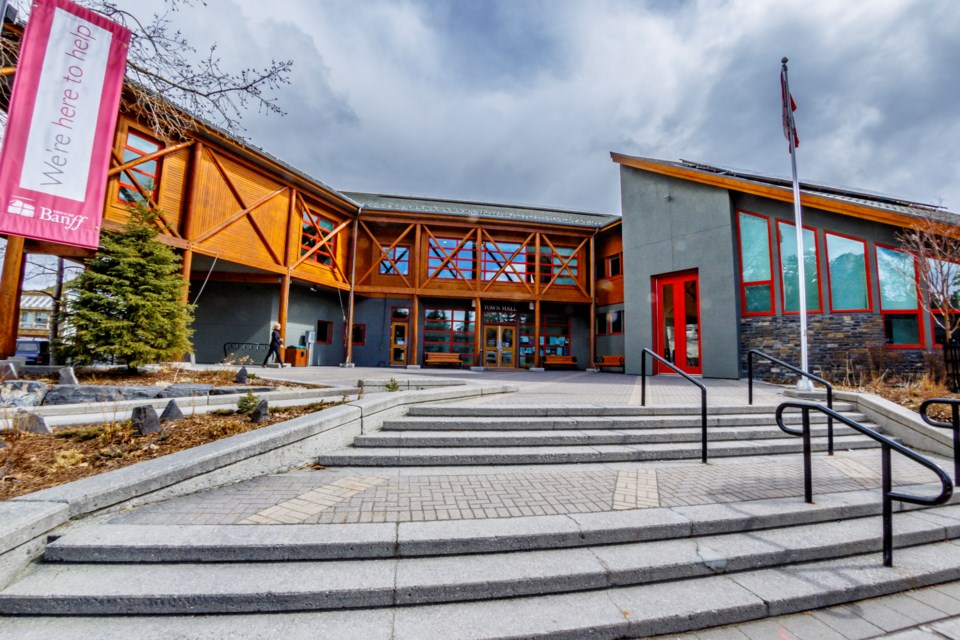BANFF – The Town of Banff put some finishing touches on its public art policy this week, but a report on a full-time administrative person to support public art initiatives is on hold.
With the results of Banff’s community social assessment expected in January 2024, administration recommended discussion of the position and cost report – which came up at service review last year – be delayed following review of the assessment.
“Admin started to look at summarizing a report on this and in discussion with the community services team, realized the community social assessment is likely going to provide some really interesting information for informing the arts and culture opportunities that are desired in town,” said Emma Sanborn, a development planner with the Town who also provides administrative support to its community art committee.
“We’re looking forward to using this information as a launching point for conversations with other arts and culture organizations in town to get some creative opportunities to bring back to council to look at how that FTE (full-time employee) complement might best fit.”
At a December 2022 governance and finance meeting, a report to the committee highlighted a misalignment of administrative support, public art funding, and direction within the Town’s terms of reference and public art policy.
A 2023 service review report outlined the costs and administrative resources comparable municipalities dedicate to public art functions like staffing and contributions to public art reserves. Canmore, with a population of roughly 16,000, recently upped its per capita contributions for public art at $5 per resident and also has a policy where 0.5 per cent of the average of the five-year annual tax contribution to municipal infrastructure goes to its public art reserve.
Banff, by comparison, was collecting $2 per resident for a total of $18,772 in 2022. A motion passed by council following the report supported looking at a full-time employee to provide administrative support as well as upping per capita distributions incrementally from 2023-25, at $3, $4 and $5 per resident, respectively. By 2025, the adjusted annual contribution for Banff will be $46,943, based on the 2022 population of 9,386 residents.
The report also noted the purview of public art falls under Canmore’s arts and culture supervisor, while in Banff, it rests on planning and environment.
In Calgary, one per cent of capital projects goes to a dedicated art budget. Since 2021, it’s worked externally with Calgary Arts Development to take over the commissioning of new public art projects.
At governance and finance committee’s Nov. 27 meeting, Sanborn said Banff’s public art policy, which was created in 2006 and has not been amended since, still stands strong, but recommended a few changes to bring it up to date with Banff’s Community Plan.
The revisions remove references and goals of the now defunct Heritage Tourism Strategy and changes the policy to address goals of the community plan, like fostering a healthy community, social and cultural goals by increasing cultural development, programming, and events in the community, and increasing opportunities for public art projects consistent with sense of place.
It also strikes a point stating contracts over $2,000 must be co-signed by the manager of corporate events for the purchase of products or services – a matter better covered by the Town’s purchasing policy, said Sanborn.
Additionally, it removes the general procedures and management section of the policy, which Sanborn noted is better managed at a project level.
“Each project is so different. Using Bear Street as the last example, we used a template from engineering that’s been reviewed by legal and then also layered on top of that advice from our public art consultant to create a custom contract,” she said.
“We don’t think this is well-placed within the policy itself.”
Governance and finance and community art committee member Barb Pelham, a Town councillor and former art dealer and owner of Canada House Gallery in Banff, was successful in making further amendments to the policy to include weight and dimensions in contracts and agreements, as well as a photograph or concept image of the project.
Her other amendment added a point ensuring jury members appointed to a project by the art committee avoid potential conflict of interest or pecuniary interest.
“The reason why I’m suggesting this is not only for my own past history with the topic, but also, in the art world … it’s a small community and people know each other and sometimes they’re married to each other and sometimes they live under the same roof, and one might be on the jury and another close associate might be a potential candidate,” she said.
The Local Journalism Initiative is funded by the Government of Canada. The position covers Îyârhe (Stoney) Nakoda First Nation and Kananaskis Country.




